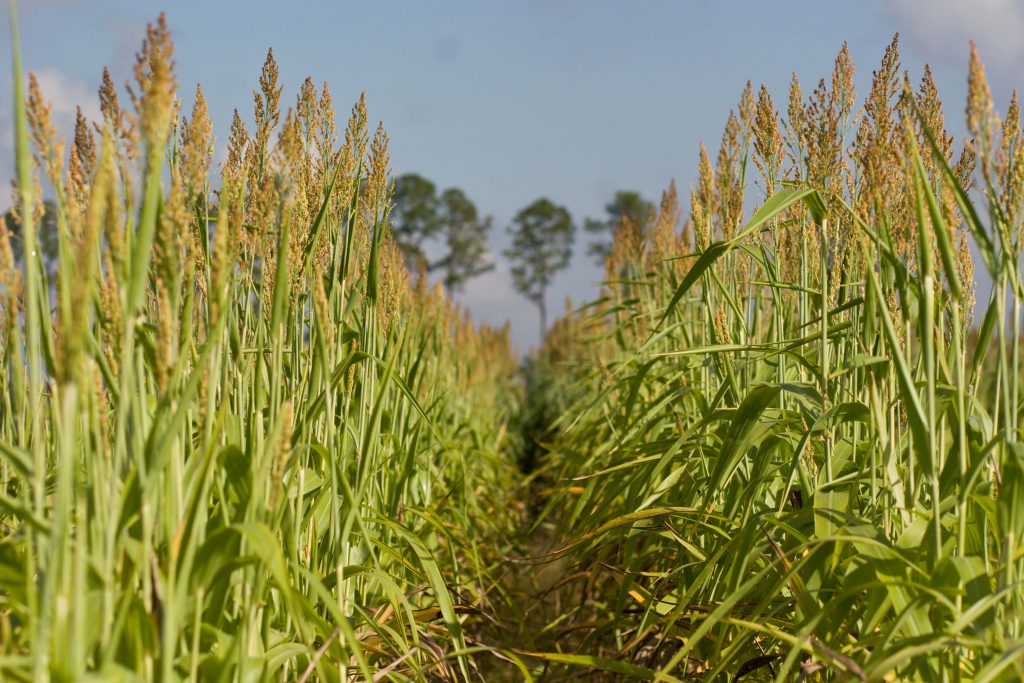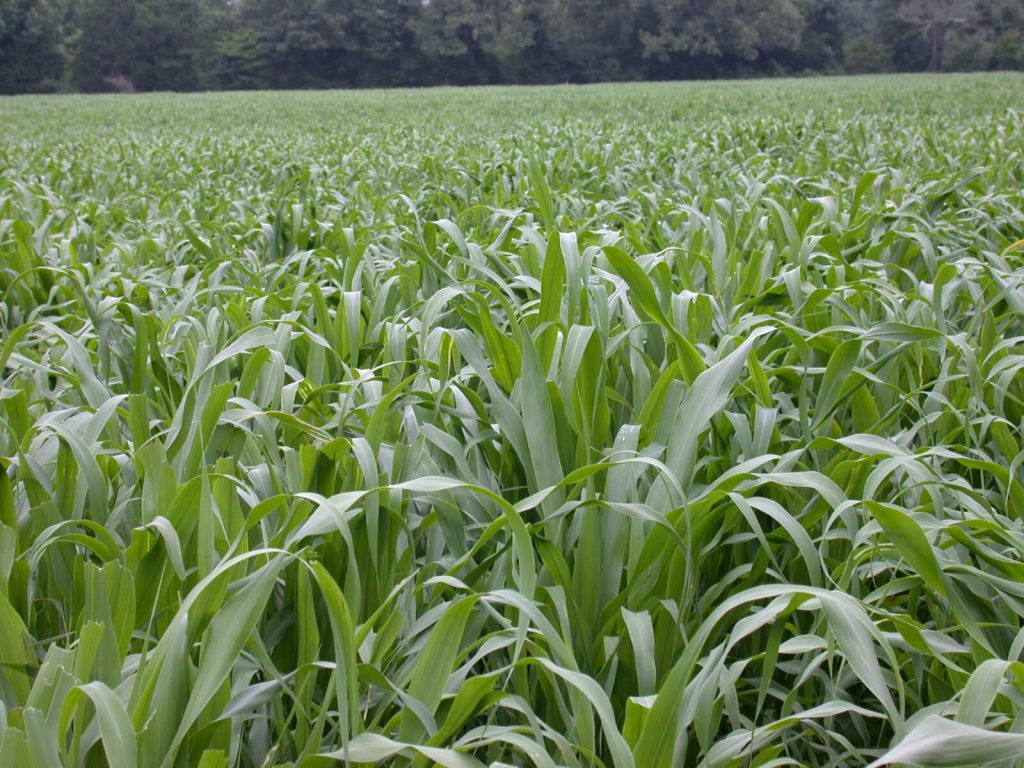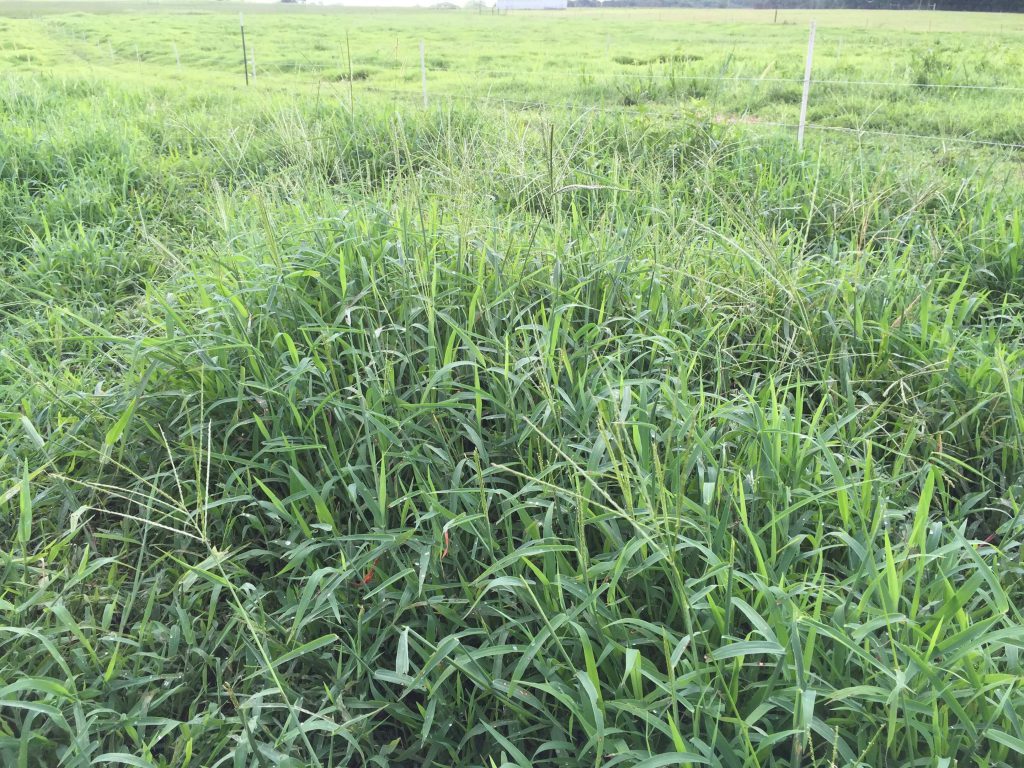Warm season perennial grasses lead forage production in Florida through the summer months; most producers rely on bahiagrass or bermudagrass to feed their livestock through the heat, but some producers utilize warm season annuals to give an extra bump of crude protein (CP) and total digestible nutrients (TDN) to their stock. Planting warm season annuals can fit well on operations where planting cool season annual forages, such as ryegrass, oats, rye, or wheat, for early grazing is the goal. Whether you have open fields to plant following a winter crop or are considering trying something new, here are some warm season annual grasses that can be incorporated into your pasture program.
Forage Sorghum
Sorghum is a warm season annual grass that originated as a grain crop, however, selection for forage varieties has taken place over the last hundred years. Forage sorghum varieties are divided into further groups including Hybrid Forage Sorghum, Sudangrass, and Sorghum X Sudangrass Hybrids. Within these groups, some sorghum varieties possess the brown midrib (BMR) trait which gives the plant brown vascular tissue as a result of reduced lignin content, which improves digestibility. Research in Texas has indicated that sorghum varieties possessing the BMR trait may improve animal gains as much as 5% to 8% compared to non-BMR varieties.

Hybrid forage sorghums grow 8 to 10 feet tall and have been selected for a single-cut or one-time harvest for silage production. Yields are typically similar to corn, but forage quality is usually lower.
Sudangrass has finer stems, is leafier than hybrid sorghums, and has a superior rate of regrowth after cutting or grazing, making it a viable option for temporary rotational grazing.
Hybrids of forage sorghums and sudangrass have the highest yield potential of the forage sorghums, if adequate rainfall is received or provided through irrigation. Hybrids can be grazed by livestock after they reach 24 inches tall. At this height, sorghum x sudangrass hybrids will typically have TDN values in the range of 53% to 60% and CP concentrations of 9% to 15%.
Sorghums can produce hydrocyanic acid (HCN or prussic acid) under certain conditions of damage or stress, like a freeze or drought. High levels of HCN in a forage results in prussic acid poisoning in livestock, which causes asphyxiation and death of the animal. HCN potential of most forage sorghums is typically low, but producers should take precautions when stressful environmental conditions arise. Sorghum is not recommended for planting in horse pastures.
Pearl Millet
Pearl millet is a high nutritive-value summer annual grass that is popular among livestock producers for grazing, hay, silage, and green chop. Crude protein can range from 9% to 11% in unfertilized soils and 14% to 15% under nitrogen-fertilized conditions. This summer forage is the most drought resistant of the summer grains and prefers well-drained soils. It is not as tolerant of flooding compared to sorghum.
Young, growing animals and lactating animals will get the most out of pearl millet and are able to put the dense nutrition to efficient use. Calves can be given access to pearl millet pastures through creep grazing. Rotational grazing is the cheapest and most efficient way to take advantage of pearl millet; turn animals to pasture when pearl millet has reached 20-25 inches in height and remove when the stubble height reaches 6-8 inches for the most efficient use.

Crabgrass
While often considered a weedy species, crabgrass can be a valuable temporary summer forage for Florida livestock producers. Crabgrass has excellent quality and palatability, but yield can vary, depending on soil fertility and rainfall. This forage is adapted to many soil types but does best in well-drained soils.
Planting crabgrass fits especially well in systems that utilize cool season annuals for early grazing. Shallow tillage prior to planting winter annuals will incorporate crabgrass seed and usually results in good crabgrass stands the following spring, without the need for spring tillage. Crabgrass will reseed itself year after year if managed to allow the plant to flower and produce seed.
In a rotational grazing system, it is recommended to begin grazing when crabgrass pastures are no more than 12 inches in height. Rotate animals off when the forage reaches 3 to 6 inches, and restock when pastures reach 6 to 8 inches in height.

For more information on warm season annual grass options, contact your local extension agent or click the sources below.
Sources
 0
0
